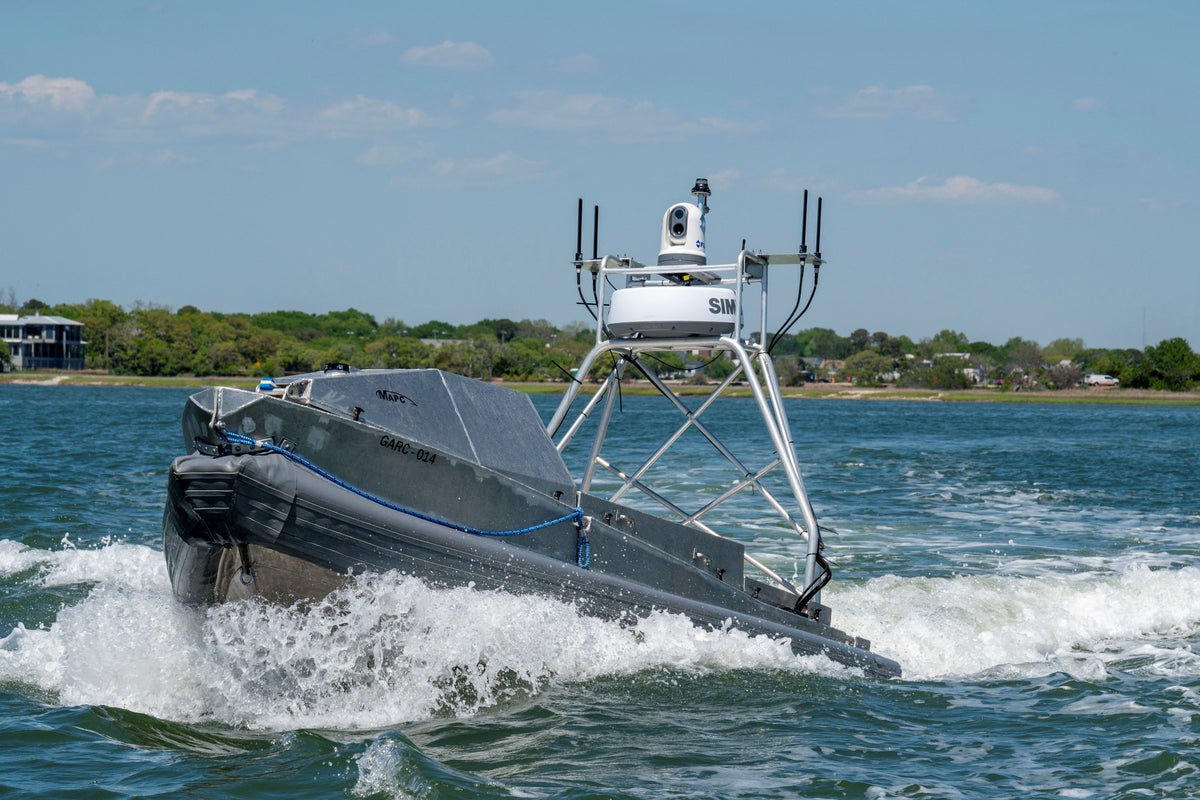
The U.S. Navy has experienced several major setbacks in its efforts to develop a new fleet of drones in a race with China.
Last month, the Navy was testing autonomous drone boats off the California coast when one vessel stalled. As officials worked to fix a software problem, another vessel plowed into the stalled boat, flipped over the deck, and crashed back into the sea, according to <a rel="nofollow" target="_blank" href="https://www.reuters.com/business/aerospace-defense/us-navy-is-building-drone-fleet-take-Reuters. The two vessels were built by American defense tech companies, Saronic and BlackSea Technologies.
During a test conducted by the Navy weeks earlier, a support boat captain was flung into the water when another autonomous BlackSea vessel that it was towing unexpectedly sped up. This caused the support boat to capsize, four people familiar with the incident told the news agency. The captain declined to seek medical attention. The incident was initially reported by <a rel="nofollow" target="_blank" href="https://defensescoop.com/2025/07/01/navy-unmanned-vessel-accident-boat-ventura-channel-islands-Defense Scoop.
Both setbacks were due to software issues and human error. This included breakdowns in communication between onboard systems and external autonomous software, a person with direct knowledge of the issue told Reuters.
Maritime drones have made a massive impact in the war between Russia and Ukraine, and U.S. military leaders have taken note. They have said repeatedly that they need a large number of aerial and maritime drones to stop a possible attack on Taiwan by China. Taiwan has begun building up its own naval drone fleet.
The drones developed in Ukraine often look like speedboats with no seats and can carry weapons, explosives, and surveillance equipment. Primarily remote-controlled and costing nearly $250,000, they have been used for kamikaze missions to take down Russia’s Black Sea Fleet.
The U.S. is working to build an autonomous naval fleet that can move in swarms without being controlled by humans, costing as much as several million dollars per vessel.
Hudson Institute autonomous warfare expert Bryan Clark told Reuters that the recent test mishaps reveal the challenges that the Navy is facing and that it will have to adapt “its tactics as it better understands what the systems can do and what they can’t do.”
A top admiral of the Navy’s autonomous maritime drone acquisition unit was fired in late May. A senior Pentagon official shared their concerns regarding the program during a meeting with Navy leaders last month, according to the news agency.
Following the California crash, the Pentagon’s Defense Innovation Unit has put a contract with L3Harris, valued at nearly $20 million, on hold. L3Harris is one of the companies providing the software used to control some of the vessels.
A spokesperson for the Pentagon told Reuters that they have conducted the drone tests as part of a “competitive and iterative approach, between operators and industry.”
In 2023, the Pentagon started its $1 billion Replicator program, a plan to acquire thousands of aerial and maritime drones, as well as the software to control them. The initial systems stemming from the program are set to be announced this month.
Procurement records show that the Navy has committed at least $160 million to BlackSea, which manufactures dozens of Global Autonomous Reconnaissance Craft boats each month.
Saronic manufactures the sea drone Corsair, but it hasn’t yet revealed a major contract. According to federal procurement records, the company has generated at least $20 million stemming from prototype agreements.
Jim Kilby, the acting chief of naval operations, visited a BlackSea facility in June.
“These systems will play a critical role in the future of naval warfare by extending fleet reach, improving situational awareness, and increasing combat effectiveness,” he said at the time, according to Reuters.
Autonomous weapons expert T.X. Hammes told the news agency that the Navy is attempting to change decades of tradition quickly.
“You’ve got a system that’s used to building big things, taking years to make a decision, and now suddenly you’re asking them to move fast,” he said.
Last month, President Donald Trump’s signature domestic policy package, known as the “Big, Beautiful Bill”, was passed into law. It includes nearly $5 billion for maritime autonomous systems.
However, the Navy has faced skepticism from the Trump administration. The Navy’s drone procurement unit, called the Program Executive Office Unmanned and Small Combatants, was recently placed under review, four people familiar with the situation told the news agency.
It may be restructured or shut down. A spokesperson for the Navy, Timothy Hawkins, told Reuters that the unit stands by its mission.
The Independent has contacted the U.S. Navy, BlackSea Technologies, Saronic, and L3Harris for comment.
